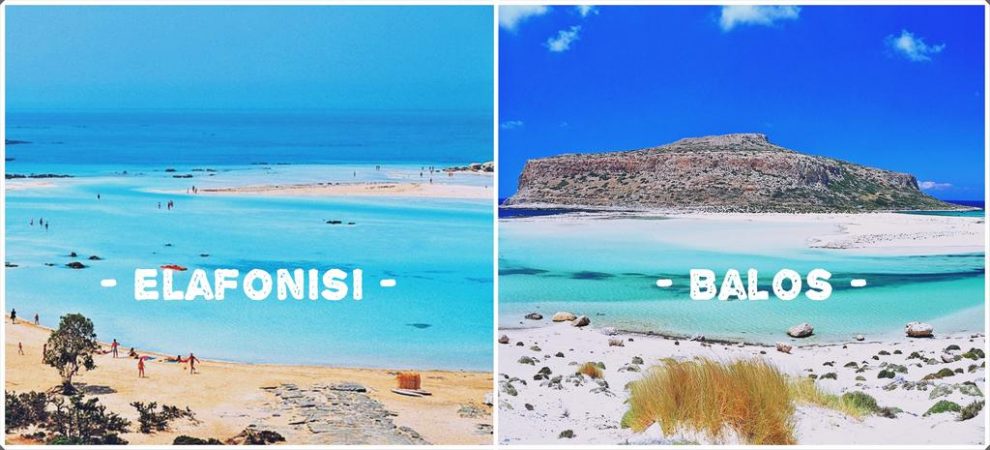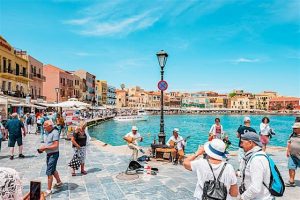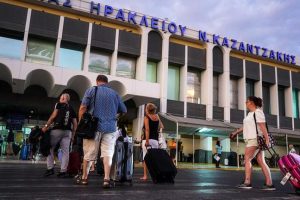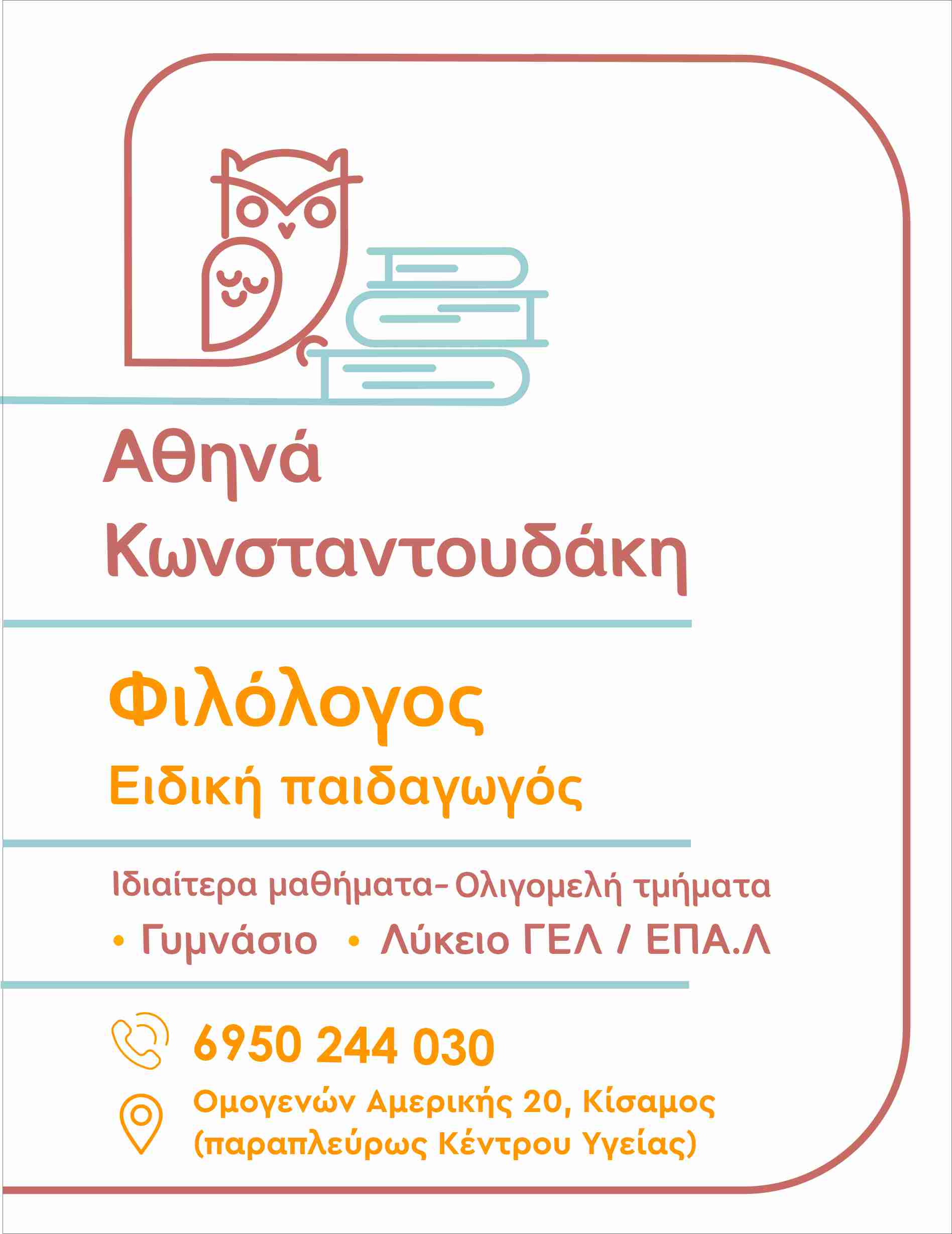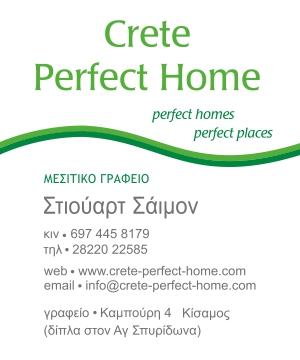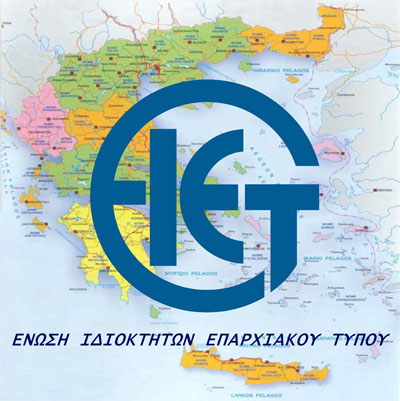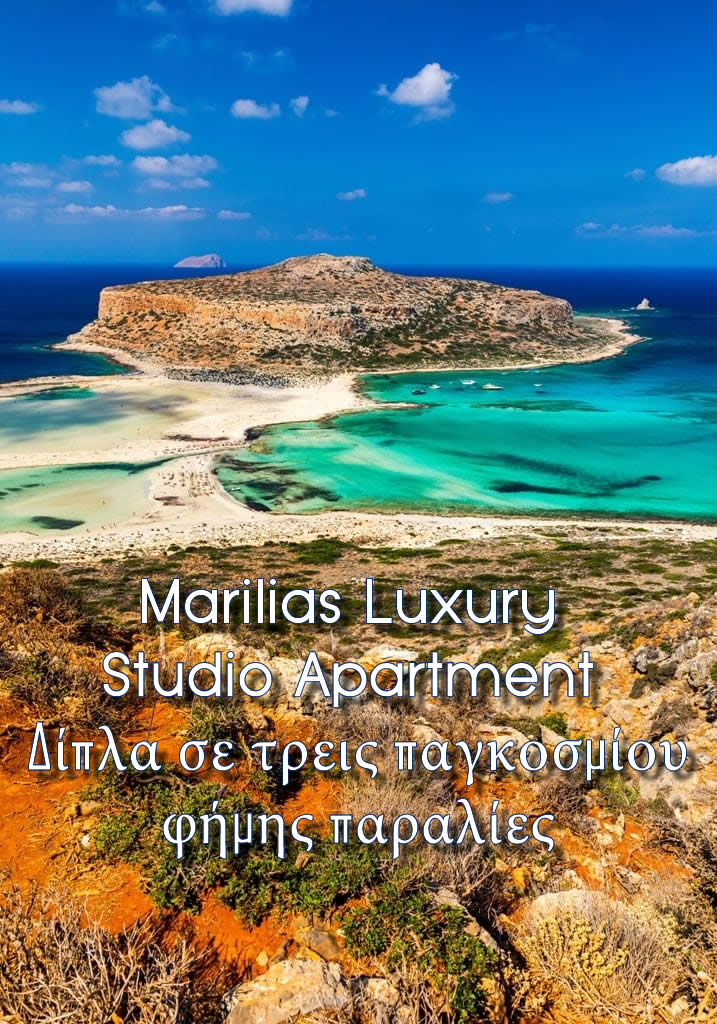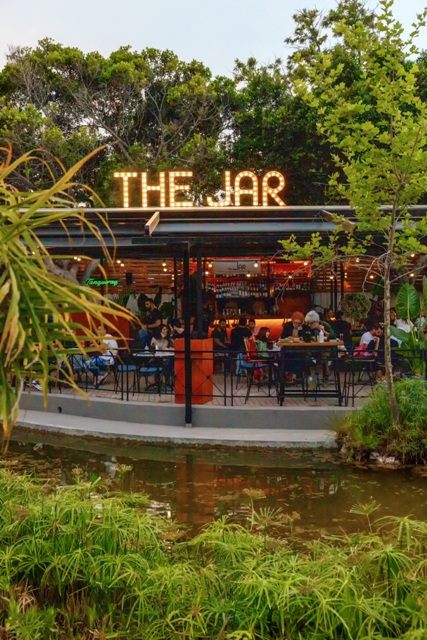Kissamos is a beautiful place with an approximate population of 15,000. Like all of Crete, it has a long-lasting history fil1ed with legends and traditions.
It offers peace and quiet away from the hustle and bustle of the city. It is a hospitable, touristic area that offers whatever a traveller on vacation needs in a traditional Cretan atmosphere.
The port of Kissamos is the link between Crete, Kythira, Kalamata, Gythio and Pirea.
‘The town has banks, a post office, a telephone exchange, a health centre, car and bike rental agencies, a bus station, and it offers a variety of shopping facilities ( leather goods, gold, local crafts, wooden carvigs etc. ). It also offers places to spend fantastic nighttime moments. You can visit the archaeological sites of Falasarna, PoIyrinia and the islands of Gramvousa (The islands of pirates with a castle), The breathtaking gorges of Sirikari, Rokka and Topolia with majestic cave of Agia Sofia, the lagoon of Balos and villages from the middle ages. You will also be amazed by the botanical and zoological, wealth of th area. Don’t forget to sample the traditional Greek cuisine, the bay’s fresh fish and the famous Kissmos wine. The crystal clear sea and the vast sandy beaches of Kissamos make your holiday a unique enjoyment.
Archaeological Walkabouts
Kissamos area, like all of Crete, has a long-standing history throughout the centuries from Post-Neolithic times through the Minoan, Mycenean, Greek and Roman ages as far as the Byzantine and Venetian period.
Kissamos: The capital of the provinc. It, is a town with a history stretching over many centuries and named after the ancient settlement situated in the same place. Various places of archlaeological interest such as Roman baths, a cemetery; an aquaduct (Kria Vrisi), mosaic f1oors, a sanctuary from the Mycenean period (Seli)and a part of the Venetian fortress in the form of a pentagon survive to this day.
Polyrrinia: It is an important ancient city of Western Crete and the best fortified in the area. Part of its walls, rock-carved houses an tombs, a temple with a huge altar, Roman ruins and a magnificent aquaduct built by Andrianos survive until now.
Falasarna: An ancient seaside naval town with a port built during historic times. Today we can still see the foundations of houses, part of the stronghold wall, a rocklike throne and part of the of the ancient port.
Gramvousa: on the small island of Gramnousa stands a castle with a long history which was built in 1584. It was once the pirate base of operations, playing an important role in the Turkish occupation and in the Cretan revolution.
Agnion: A temple devoted to the god Apollo.
Potamida: A hidden school and the geological phenomenon of “komolithi”.
Saint Sofia: A church built in an impressive cave.
Milia: A traditional settlement which was renovated for touristic reasons.
Chrisoskalitissa: A histories monastery with a long history.
Lousakies: Temples from the time of the Venetian occupation.
Kalathenes: Venetian fortress and the “Rotunda” Villa.
Drapanias: Venetian villa called “Trevizan Villa”.
Mythimna: Ancient city of the Minoan age.
Kefali: An Orthodox temple with frescos, a Venetian villa called “Kalergon Tower”
Rokka: An ancient town with a stronghold.
Gonia: A monastery built during the 17th century with a long and important history. There is a great collection of Post-Byzantine icons and plenty of historic and religious artifacts.
Dictyna: A church and sanctuary devoted to the goddess Artemis- Dictyna.
In all the villages of the province you can see old mansions, Venetian villas, Byzantine and more recent churches, memorials, stone-built springs etc.
Walking
The area has many places that you can visit on foot in order to admire its wild but peaceful beauty. The diversity of nature, the flora, the birds, the animals and the water compose a magnificent landscape that is well worth seeing.
W 1: Kissamos – Kaliviani – Balos
(14.5 km)
Route by car, motobike and walking or by sea.
Kissamos – Kaliviani 5 km with a vehicle or on foot- 1 hour 15 mins.
Kaliviani – Balos 9.5 km with a vehicle until the end of the road and 40 mins on four or walking from Kaliviani 2 hours 30 mins.
Kissamos – Balos by boat from Kissamos port.
W 2: Kissamos – Kaliviani – Falasarna
(9.5 km)
Route by car, motorbike and on foot.
Kissamos – Kaliviani 5km with a vehicle or on foot 1 hour 15 mins.
Kaliviani – Azogiras – Falasarna 3.5 km on foot 2 hours.
W 3: Kissamos – Nopigia – Rabdouhas- Rodopou
(14 km)
Route by car, motorbike and on foot.
Kissamos – Nopigia 5.5 km with a vehicle or on foot 1 hour 30 mins
Nopigia – Rabdouhas 5 km on foot 2 hours 15mins
Rabdouhas – Rodopou 3.5 km with a vehicle or on foot 1 hour 30 mins
W 4: Sirikari – Polyrinia – Kissamos
(14 km)
Route by car, motorbike and on foot.
Sirikari ( gorge ) – Polyrinia 7 km on foot 2 hours 40 mins
Polyrinia – Kissamos 7 km with a vehicle or on foot 2 hours
W 5: Platanos – Lousakies – Kissamos
(10 km)
Route by car, motorbike or on foot.
Platanos – Lousakies 4 km with a vehicle or on foot 1 hour 30 mins
Lousakies – Kissamos 6km with a vehicle or on foot 2 hours
W 6: Koukounara – polyrinia – Galouvas – Fterolaka – Falasarna
(13 km )
Route on foot
Koukounara – Polyrinia 3km on foot 1 hour 30 mins
Polyrinia – Galouvas – Fterolaka 2.5 km on foot 1 hour
Fterolaka- Falasarna 6.5 km on foot 2 hours 30 mins
W 7: Katsomatados – Mouri – Voulgaro
(11.5 km)
Route by car and on foot.
Katsomatados (gorge) – Mouri 8km on foot 3 hours
Mouri – Voulgaro 3.5 km with a vehicle or on foot 1 hour
W 8: Sasalo – Katsomatados – Topolia
(8 km)
Route on foot.
Sasalo – Katsomatados 4km on foot 1 hour 20 mins
Katsomatados – Topolia 4 km on foot 1 hour 15 mins
W 9: Rodopou – St John – Rodopou
(15 km)
Rodopou – St John 6.5 km with. a vehicle or on foot 2 hours
St John – Rodopou 8.5 km on foot 3 hours
All walks can be done in the reverse order. You can go to all starting points or final
destinations with your own vehicle, by bus or by taxi.
Gorges
The Cretan gorges are a noteworthy characteristic of the Cretan landscape a geological phenomenon, and a play of nature. The combination of wildlife sanctuary, bushes, aromatic herbs and enchanting birdsong create a special audio-visual pleasure.
G1: Sirikari. National forest. The gorge stretches from Sirikari to Kissamos, with a length of 17 km, in many places it is sheer, it broadens and narrows and passing it is rather difficult. Every now and then water flows gurgling down its ravine. Roughly half way there is a small forest of Sycamores. You can visit it on foot.
G 2: Topolia. The gorge runs from Katsomatado to Topolia for a length of 4 km. It is majestic and wild with rich vegetation and many caves, the biggest being Agia Sofia with a church of the same name built into the rock. You can visit it on foot or, from further up, by car.
G 3: Rokka. From Rokka it runs to 1 km in length with a wealth of f1ora and fauna. The entrance is to the North, close to the old mansion of S. Makris. You can visit it on foot.
G 4: Halases. The gorge stretches from Malathyro 10 Mouri for 2 km. It is a place of natural beauty with a natural tunnel from the middle of which flows the river Anilios.
There is also a stone-built bridge spanning the gorge at its start.
Beaches
The vast number of beautiful, long sandy beaches with a limpid, turquoise sea and unique views make your stay in the area an unforgettable dream. You can enjoy your swim in Kissamos at the beaches: Mavro Molo, Telonio and Stadium. There is also a diving school in Falasarna with its red – coloured sand. Further beaches are: Elafonisi with its magical landscape and alternating colours on the beach, Balos Lagoon (of special natural beauty), Sfinari, Nopigia, Mithymna beach etc.
Cruises.
From Kissamos port there is daily cruise to Gramvousa island (with its Venetian castle and church) and to Balos Lagoon.
Important telephone numbers: Tel code: (28220)
Health centre: 22.222 , police: 22.115 , fire brigade: 24.333 , port police: 22.024 , town hall Kissamou: 83.044, Mithymna town hall: 83.500, Inachorio town: 61544. bus station: 22.035
Airport Chania: (28210) 63.264, Port Souda: (28210) 89.240



